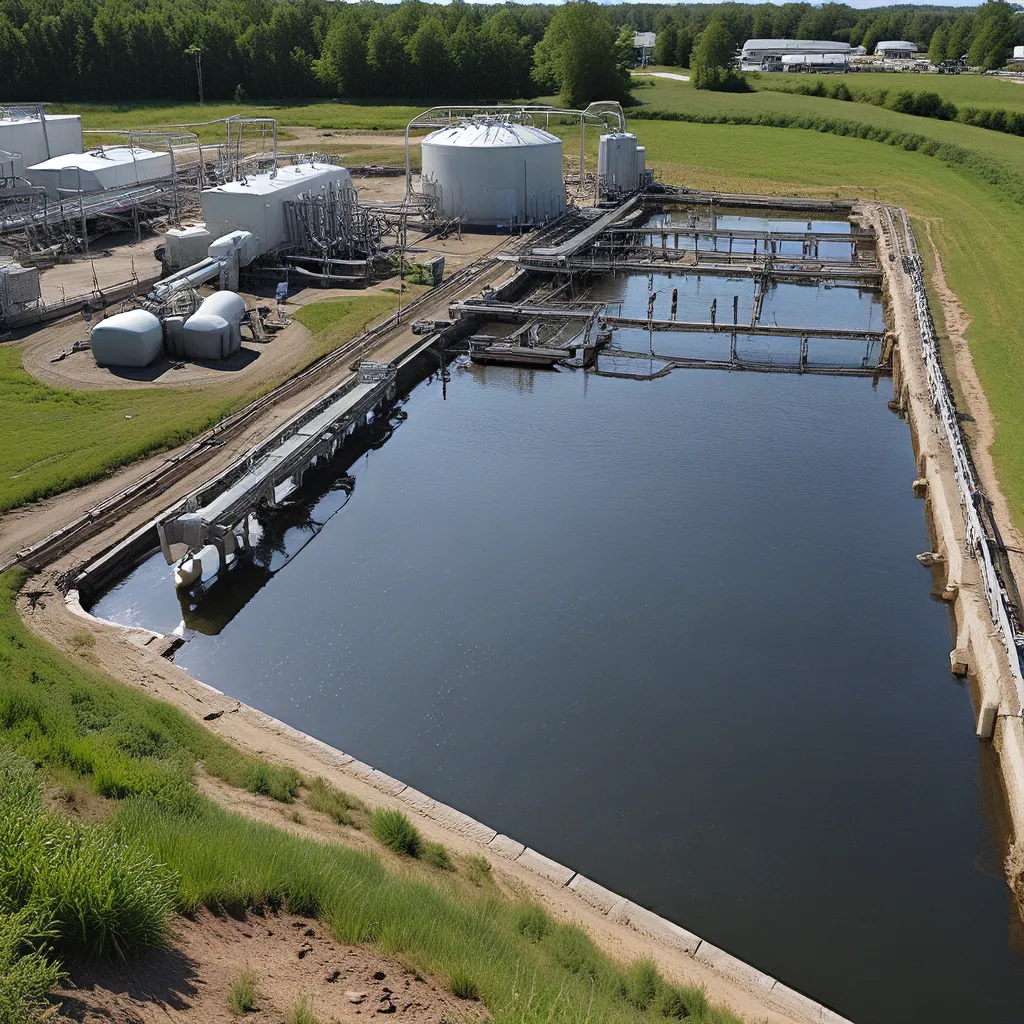
Diving into the Untapped Potential of Wastewater as a Clean Energy Source
You know, when I first learned about the concept of turning wastewater into renewable energy, I have to admit, I was a little skeptical. I mean, the idea of harnessing power from something as mundane as sewage just seemed… well, a bit far-fetched, to be honest. But boy, was I in for a surprise.
As it turns out, the wastewater treatment industry is sitting on a veritable goldmine of untapped renewable energy potential. And I’m not just talking about a few measly kilowatts here and there – we’re talking about billions of dollars’ worth of clean, sustainable power that could be generated from all the wastewater we produce every single day.
Now, I know what you’re thinking – “But wait, isn’t wastewater just, well, gross?” And you’re not wrong. The idea of extracting energy from something that’s, let’s be real, basically just a giant toilet bowl, can be a little… unsettling. But trust me, the science behind it is actually pretty fascinating.
The Hidden Power of Wastewater
You see, when we flush our toilets or run our sinks, all that water doesn’t just disappear into the ether. It gets pumped into a vast network of sewage systems, where it’s collected and transported to wastewater treatment plants. And that’s where the magic happens.
At these plants, the wastewater goes through a series of physical, chemical, and biological processes to remove all the, well, yucky stuff – things like organic matter, nutrients, and suspended solids. And as it turns out, a lot of that stuff is actually bursting with energy-rich compounds.
I’m talking about things like methane and hydrogen, which can be captured and converted into electricity or biofuels. And the best part? This process doesn’t just clean up the wastewater – it actually generates renewable energy in the process.
Tapping into the Energy Potential
Now, I know what you’re thinking – “That’s all well and good, but how do we actually harness this energy potential?” Well, my friends, the wastewater treatment industry has been hard at work on that very problem.
One of the key ways they’re doing it is through a process called anaerobic digestion. Basically, they take all the organic matter in the wastewater and feed it to these special bacteria that break it down and produce methane as a byproduct. That methane can then be captured and used to power generators that produce electricity.
And the best part? This process doesn’t just generate renewable energy – it also helps to reduce greenhouse gas emissions by capturing all that methane before it can escape into the atmosphere. It’s a win-win, if you ask me.
But that’s not the only way the wastewater treatment industry is tapping into this renewable energy potential. They’re also exploring things like hydropower, where they use the flow of the wastewater itself to spin turbines and generate electricity. And then there’s solar power, where they’re installing solar panels on the roofs of wastewater treatment plants to harness the sun’s energy.
The Future of Wastewater and Renewable Energy
Now, I know what you’re thinking – “This all sounds great, but is it really feasible on a large scale?” And let me tell you, the answer is a resounding yes.
In fact, according to a study by the National Renewable Energy Laboratory, the wastewater treatment industry has the potential to generate up to 13.2 billion kilowatt-hours of electricity per year – enough to power 1.3 million homes. And that’s just the tip of the iceberg.
As research in this area continues to evolve, we’re likely to see even more innovative technologies and efficient processes that can maximize the energy potential of our wastewater. And that’s great news for both the environment and our wallets, as it could reduce our reliance on fossil fuels and lower our energy costs.
Of course, there are still some challenges to overcome – things like infrastructure upgrades, regulatory hurdles, and public acceptance – but the potential benefits are simply too great to ignore. And that’s why companies like Alpha Wastewater are leading the charge in this exciting new frontier of renewable energy.
So, the next time you flush your toilet or run your sink, remember – that “gross” wastewater you’re sending down the drain could actually be a treasure trove of clean, sustainable power. And who knows, maybe one day, your wastewater could be powering your home or charging your electric car. Pretty cool, right?
Harnessing the Untapped Potential
Now, I know what you’re thinking – “This all sounds great, but how can I get involved?” Well, my friends, there are a few ways you can help harness the untapped potential of wastewater as a renewable energy source.
First and foremost, support your local wastewater treatment plant. These facilities are on the frontlines of this renewable energy revolution, and they need all the help they can get. Reach out to them, see how you can volunteer or donate, and learn more about the innovative technologies they’re using to generate clean power.
And if you’re feeling particularly entrepreneurial, why not consider a career in the wastewater treatment industry? There’s a growing demand for skilled professionals who can help design, install, and maintain the cutting-edge systems that are transforming wastewater into renewable energy.
But even if you’re not ready to dive in headfirst, you can still make a difference in your own way. Reduce your water usage, recycle your waste, and spread the word about the amazing potential of wastewater as a renewable energy source. After all, the more awareness and support we can generate, the faster we can unlock the full power of this untapped resource.
So, what do you say? Are you ready to get your hands dirty and help power the future? Because trust me, the future of renewable energy is flowing right through our sewers and wastewater treatment plants. And it’s time we harness that power for the good of our planet and our wallets.